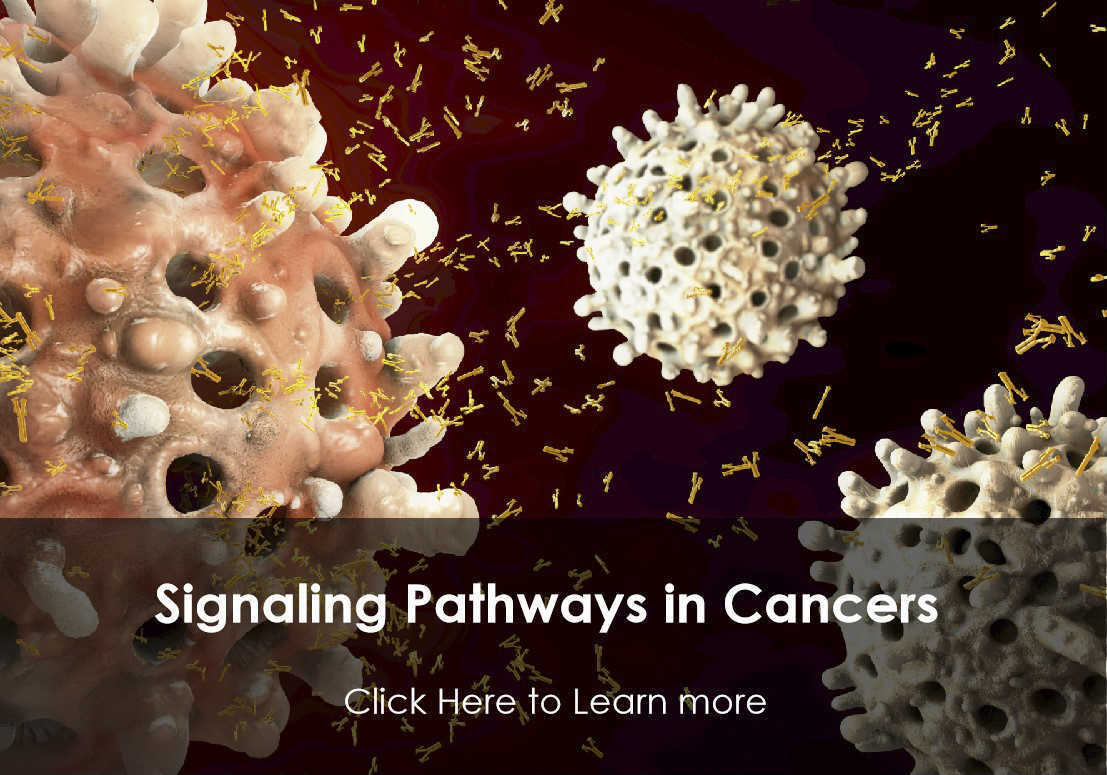CD40LG
CD40LG (CD40 Ligand) is a Protein Coding gene. Diseases associated with CD40LG include Immunodeficiency With Hyper-Igm, Type 1 and Cd40 Ligand Deficiency. Among its related pathways are PEDF Induced Signaling and Cytokine Signaling in Immune system. Gene Ontology (GO) annotations related to this gene include cytokine activity and CD40 receptor binding.
Full Name
CD40 Ligand
Function
Cytokine that acts as a ligand to CD40/TNFRSF5 (PubMed:1280226, PubMed:31331973).
Costimulates T-cell proliferation and cytokine production (PubMed:8617933).
Its cross-linking on T-cells generates a costimulatory signal which enhances the production of IL4 and IL10 in conjunction with the TCR/CD3 ligation and CD28 costimulation (PubMed:8617933).
Induces the activation of NF-kappa-B (PubMed:15067037, PubMed:31331973).
Induces the activation of kinases MAPK8 and PAK2 in T-cells (PubMed:15067037).
Induces tyrosine phosphorylation of isoform 3 of CD28 (PubMed:15067037).
Mediates B-cell proliferation in the absence of co-stimulus as well as IgE production in the presence of IL4 (By similarity).
Involved in immunoglobulin class switching (By similarity).
CD40 ligand, soluble form: Acts as a ligand for integrins, specifically ITGA5:ITGB1 and ITGAV:ITGB3; both integrins and the CD40 receptor are required for activation of CD40-CD40LG signaling, which have cell-type dependent effects, such as B-cell activation, NF-kappa-B signaling and anti-apoptotic signaling.
Costimulates T-cell proliferation and cytokine production (PubMed:8617933).
Its cross-linking on T-cells generates a costimulatory signal which enhances the production of IL4 and IL10 in conjunction with the TCR/CD3 ligation and CD28 costimulation (PubMed:8617933).
Induces the activation of NF-kappa-B (PubMed:15067037, PubMed:31331973).
Induces the activation of kinases MAPK8 and PAK2 in T-cells (PubMed:15067037).
Induces tyrosine phosphorylation of isoform 3 of CD28 (PubMed:15067037).
Mediates B-cell proliferation in the absence of co-stimulus as well as IgE production in the presence of IL4 (By similarity).
Involved in immunoglobulin class switching (By similarity).
CD40 ligand, soluble form: Acts as a ligand for integrins, specifically ITGA5:ITGB1 and ITGAV:ITGB3; both integrins and the CD40 receptor are required for activation of CD40-CD40LG signaling, which have cell-type dependent effects, such as B-cell activation, NF-kappa-B signaling and anti-apoptotic signaling.
Biological Process
Activation of JUN kinase activity Source: UniProtKB
B cell differentiation Source: Ensembl
B cell proliferation Source: UniProtKB
CD40 signaling pathway Source: UniProtKB
Inflammatory response Source: UniProtKB
Integrin-mediated signaling pathway Source: UniProtKB
Isotype switching Source: UniProtKB
Leukocyte cell-cell adhesion Source: UniProtKB
Negative regulation of apoptotic process Source: UniProtKB
Platelet activation Source: UniProtKB
Positive regulation of endothelial cell apoptotic process Source: BHF-UCL
Positive regulation of interleukin-10 production Source: UniProtKB
Positive regulation of interleukin-12 production Source: UniProtKB
Positive regulation of interleukin-4 production Source: UniProtKB
Positive regulation of NF-kappaB transcription factor activity Source: UniProtKB
Positive regulation of T cell proliferation Source: UniProtKB
Regulation of immune response Source: Reactome
Regulation of immunoglobulin production Source: Ensembl
T cell costimulation Source: UniProtKB
Tumor necrosis factor-mediated signaling pathway Source: Reactome
B cell differentiation Source: Ensembl
B cell proliferation Source: UniProtKB
CD40 signaling pathway Source: UniProtKB
Inflammatory response Source: UniProtKB
Integrin-mediated signaling pathway Source: UniProtKB
Isotype switching Source: UniProtKB
Leukocyte cell-cell adhesion Source: UniProtKB
Negative regulation of apoptotic process Source: UniProtKB
Platelet activation Source: UniProtKB
Positive regulation of endothelial cell apoptotic process Source: BHF-UCL
Positive regulation of interleukin-10 production Source: UniProtKB
Positive regulation of interleukin-12 production Source: UniProtKB
Positive regulation of interleukin-4 production Source: UniProtKB
Positive regulation of NF-kappaB transcription factor activity Source: UniProtKB
Positive regulation of T cell proliferation Source: UniProtKB
Regulation of immune response Source: Reactome
Regulation of immunoglobulin production Source: Ensembl
T cell costimulation Source: UniProtKB
Tumor necrosis factor-mediated signaling pathway Source: Reactome
Cellular Location
Cell membrane; Cell surface
CD40 ligand, soluble form: Secreted. Release of soluble CD40L from platelets is partially regulated by GP IIb/IIIa, actin polymerization, and a matrix metalloproteinases (MMP) inhibitor-sensitive pathway.
CD40 ligand, soluble form: Secreted. Release of soluble CD40L from platelets is partially regulated by GP IIb/IIIa, actin polymerization, and a matrix metalloproteinases (MMP) inhibitor-sensitive pathway.
Involvement in disease
Immunodeficiency with hyper-IgM, type 1 (HIGM1): Immunoglobulin isotype switch defect characterized by elevated concentrations of serum IgM and decreased amounts of all other isotypes. Affected males present at an early age (usually within the first year of life) recurrent bacterial and opportunistic infections, including Pneumocystis carinii pneumonia and intractable diarrhea due to cryptosporidium infection. Despite substitution treatment with intravenous immunoglobulin, the overall prognosis is rather poor, with a death rate of about 10% before adolescence.
Topology
Cytoplasmic: 1-22
Helical: 23-46
Extracellular: 47-261
Helical: 23-46
Extracellular: 47-261
PTM
The soluble form derives from the membrane form by proteolytic processing.
N-linked glycan is a mixture of high mannose and complex type. Glycan structure does not influence binding affinity to CD40.
Not O-glycosylated.
N-linked glycan is a mixture of high mannose and complex type. Glycan structure does not influence binding affinity to CD40.
Not O-glycosylated.
View more
Anti-CD40LG antibodies
+ Filters
 Loading...
Loading...
Target: CD40LG
Host: Mouse
Antibody Isotype: IgG1
Specificity: Human
Clone: CBT2331
Application*: F
Target: CD40LG
Host: Mouse
Antibody Isotype: IgG2a
Specificity: Human
Clone: CBT3025
Application*: F
Target: CD40LG
Specificity: Human
Target: CD40LG
Specificity: Human
Target: CD40LG
Specificity: Human
Target: CD40LG
Specificity: Human
Target: CD40LG
Specificity: Human
Target: CD40LG
Specificity: Human
Target: CD40LG
Host: Mouse
Antibody Isotype: IgG1, κ
Specificity: Human
Clone: TRAP-1
Application*: F, IP, IF
Target: CD40LG
Host: Mouse
Antibody Isotype: IgG1, κ
Specificity: Human
Clone: CBYJT-1108
Application*: IP, WB, E, IF
Target: CD40LG
Host: Rabbit
Antibody Isotype: IgG
Specificity: Human
Clone: CBFYC-1303
Application*: E
Target: CD40LG
Host: Mouse
Antibody Isotype: IgG1, κ
Specificity: Human
Clone: CBFYC-1302
Application*: IP, WB, E, IF
Target: CD40LG
Host: Mouse
Antibody Isotype: IgG2a, κ
Specificity: Human, Mouse, Rat, Dog, Horse, Pig, Cattle
Clone: CBFYC-1301
Application*: IP, WB, E, IF
Target: CD40LG
Host: Mouse
Antibody Isotype: IgG1, κ
Specificity: Mouse
Clone: CBFYC-1300
Application*: WB, B, in vivo
Target: CD40LG
Host: Mouse
Antibody Isotype: IgG2a
Specificity: Human
Clone: CBFYC-0157
Application*: IP, F, B, in vivo
Target: CD40LG
Host: Mouse
Antibody Isotype: IgG2b, κ
Specificity: Human
Clone: 2E2
Application*: E, WB
Target: CD40LG
Host: Rabbit
Antibody Isotype: IgG
Specificity: Human
Clone: 202
Application*: E
Target: CD40LG
Host: Armenian Hamster
Antibody Isotype: IgG
Specificity: Mouse
Clone: MR-1
Application*: B, WB, in vivo
More Infomation
Hot products 
-
Rabbit Anti-ADRA1A Recombinant Antibody (V2-12532) (CBMAB-1022-CN)

-
Mouse Anti-Acetyl-α-Tubulin (Lys40) Recombinant Antibody (V2-623485) (CBMAB-CP2897-LY)

-
Mouse Anti-ASTN1 Recombinant Antibody (H-9) (CBMAB-1154-CN)

-
Mouse Anti-ABIN2 Recombinant Antibody (V2-179106) (CBMAB-A0349-YC)

-
Mouse Anti-2C TCR Recombinant Antibody (V2-1556) (CBMAB-0951-LY)

-
Mouse Anti-BPGM Recombinant Antibody (CBYY-1806) (CBMAB-2155-YY)

-
Rat Anti-C5AR1 Recombinant Antibody (8D6) (CBMAB-C9139-LY)

-
Mouse Anti-BACE1 Recombinant Antibody (CBLNB-121) (CBMAB-1180-CN)

-
Mouse Anti-8-oxoguanine Recombinant Antibody (V2-7697) (CBMAB-1869CQ)

-
Mouse Anti-CD2AP Recombinant Antibody (BR083) (CBMAB-BR083LY)

-
Mouse Anti-EIF4G1 Recombinant Antibody (2A9) (CBMAB-A2544-LY)

-
Mouse Anti-APCS Recombinant Antibody (CBYC-A663) (CBMAB-A3054-YC)

-
Mouse Anti-APOA1 Monoclonal Antibody (CBFYR0637) (CBMAB-R0637-FY)

-
Mouse Anti-CDKL5 Recombinant Antibody (CBFYC-1629) (CBMAB-C1689-FY)

-
Rabbit Anti-Acetyl-Histone H4 (Lys16) Recombinant Antibody (V2-623415) (CBMAB-CP1021-LY)

-
Mouse Anti-AKR1C3 Recombinant Antibody (V2-12560) (CBMAB-1050-CN)

-
Mouse Anti-ACE2 Recombinant Antibody (V2-179293) (CBMAB-A0566-YC)

-
Mouse Anti-CFL1 (Phospho-Ser3) Recombinant Antibody (CBFYC-1770) (CBMAB-C1832-FY)

-
Mouse Anti-ARID3A Antibody (A4) (CBMAB-0128-YC)

-
Mouse Anti-AGO2 Recombinant Antibody (V2-634169) (CBMAB-AP203LY)

For Research Use Only. Not For Clinical Use.
(P): Predicted
* Abbreviations
- AActivation
- AGAgonist
- APApoptosis
- BBlocking
- BABioassay
- BIBioimaging
- CImmunohistochemistry-Frozen Sections
- CIChromatin Immunoprecipitation
- CTCytotoxicity
- CSCostimulation
- DDepletion
- DBDot Blot
- EELISA
- ECELISA(Cap)
- EDELISA(Det)
- ESELISpot
- EMElectron Microscopy
- FFlow Cytometry
- FNFunction Assay
- GSGel Supershift
- IInhibition
- IAEnzyme Immunoassay
- ICImmunocytochemistry
- IDImmunodiffusion
- IEImmunoelectrophoresis
- IFImmunofluorescence
- IGImmunochromatography
- IHImmunohistochemistry
- IMImmunomicroscopy
- IOImmunoassay
- IPImmunoprecipitation
- ISIntracellular Staining for Flow Cytometry
- LALuminex Assay
- LFLateral Flow Immunoassay
- MMicroarray
- MCMass Cytometry/CyTOF
- MDMeDIP
- MSElectrophoretic Mobility Shift Assay
- NNeutralization
- PImmunohistologyp-Paraffin Sections
- PAPeptide Array
- PEPeptide ELISA
- PLProximity Ligation Assay
- RRadioimmunoassay
- SStimulation
- SESandwich ELISA
- SHIn situ hybridization
- TCTissue Culture
- WBWestern Blot

Online Inquiry





